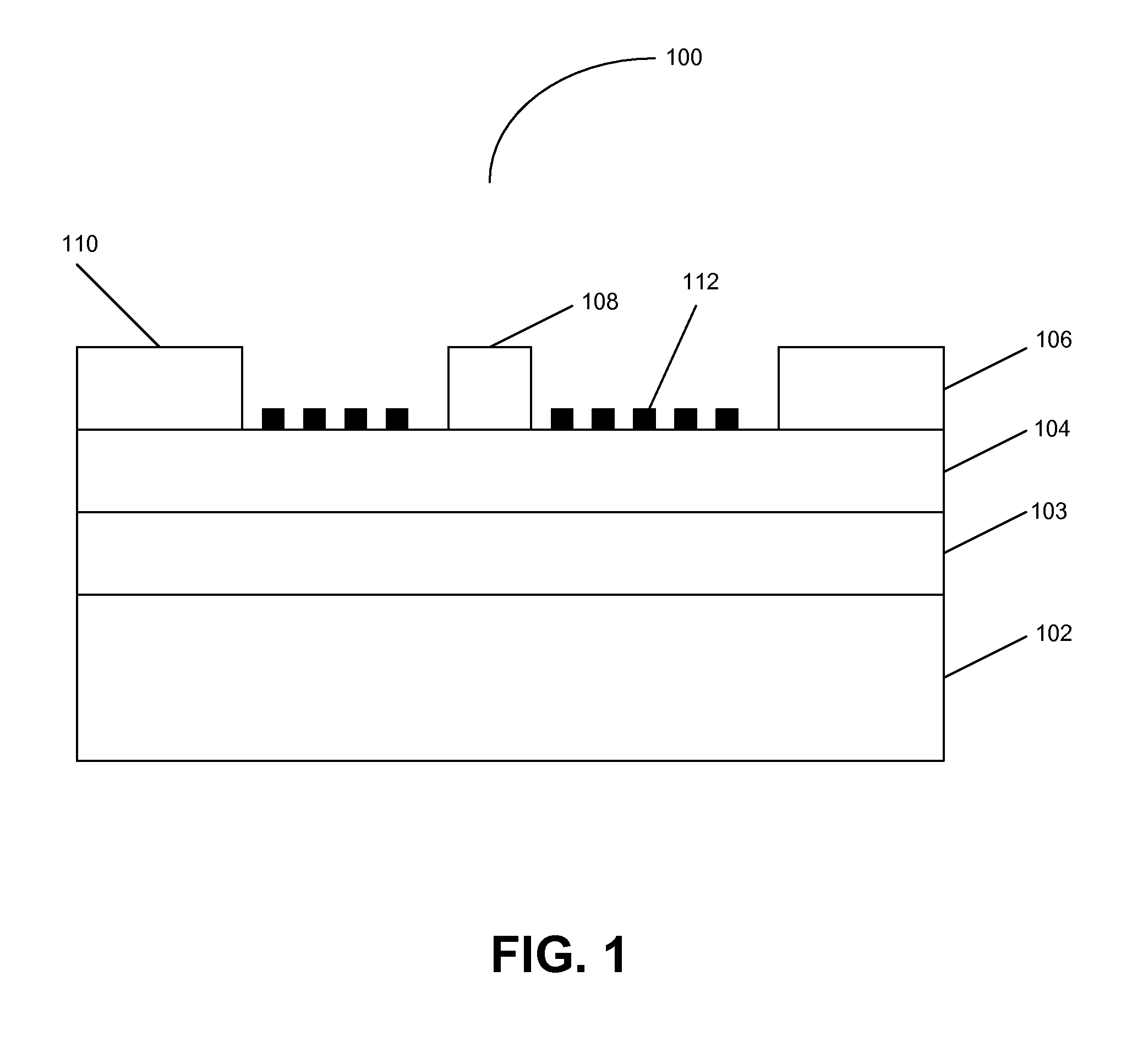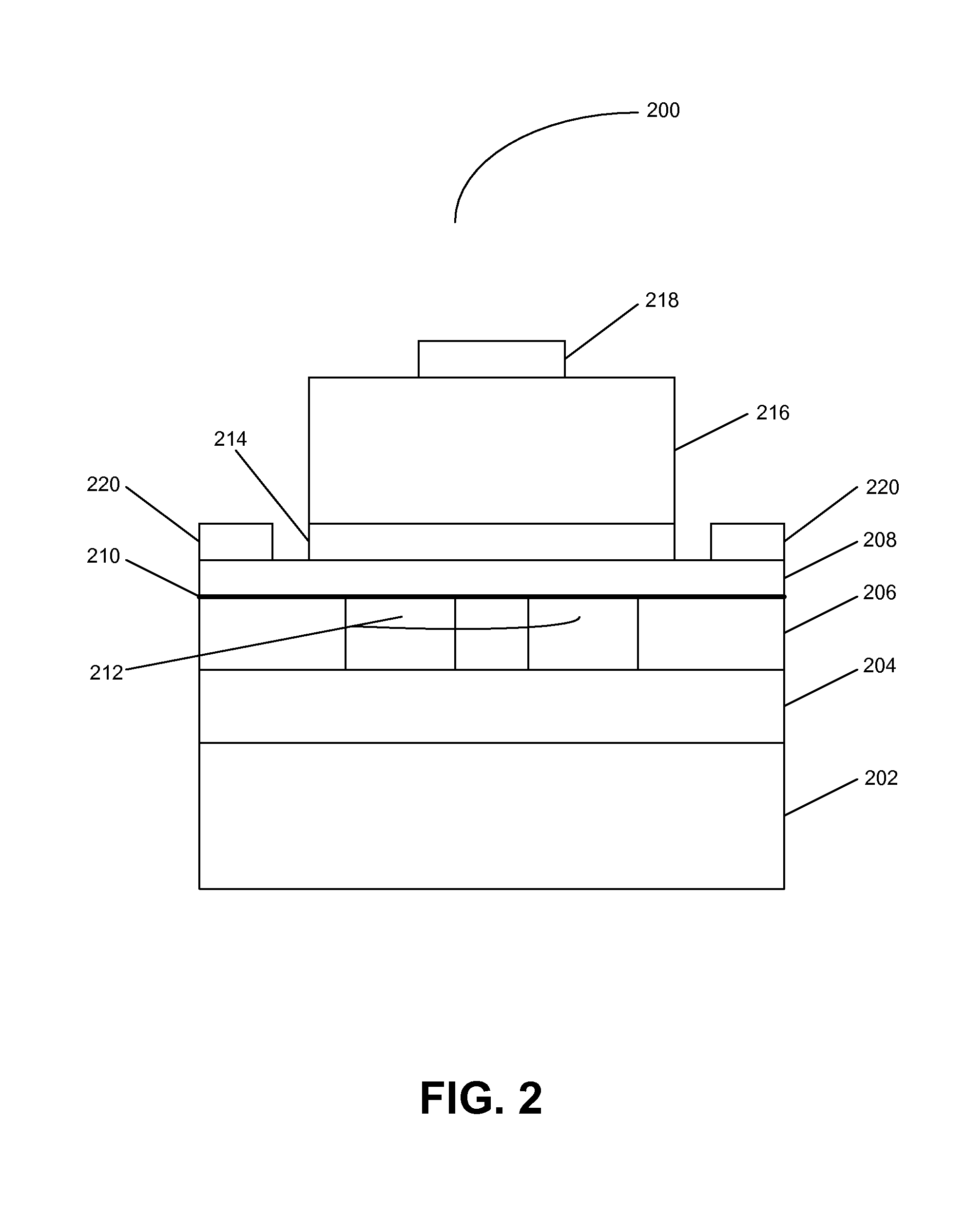Hybrid silicon evanescent photodetectors
a photodetectors and hybrid silicon technology, applied in the field of semiconductor devices, can solve the problems of difficult growth on silicon, difficult integration with electronic devices manufactured on silicon, cost and size are much smaller,
- Summary
- Abstract
- Description
- Claims
- Application Information
AI Technical Summary
Benefits of technology
Problems solved by technology
Method used
Image
Examples
Embodiment Construction
[0025]In the following description, reference is made to the accompanying drawings which form a part hereof, and which is shown, by way of illustration, several embodiments of the present invention. It is understood that other embodiments may be utilized and structural changes may be made without departing from the scope of the present invention.
Overview
[0026]FIG. 1 is a side view of a photonic integrated circuit in accordance with the present invention.
[0027]Device 100 is shown, with wafer 102, film 103, waveguide layer 104, modulator / mode converter 106, gain region 108, and photodetector 110 as shown. DBR reflector 112 are also shown.
[0028]Wafer 102 is typically a silicon CMOS wafer, but can be other materials, such as glass, as desired. Film 103 is typically silicon oxide, but can also be a nitride or silicon oxynitride if desired without departing from the scope of the present invention. Waveguide layer 104 is on film 103, and is the silicon waveguide layer for device 100. Modul...
PUM
 Login to View More
Login to View More Abstract
Description
Claims
Application Information
 Login to View More
Login to View More - R&D
- Intellectual Property
- Life Sciences
- Materials
- Tech Scout
- Unparalleled Data Quality
- Higher Quality Content
- 60% Fewer Hallucinations
Browse by: Latest US Patents, China's latest patents, Technical Efficacy Thesaurus, Application Domain, Technology Topic, Popular Technical Reports.
© 2025 PatSnap. All rights reserved.Legal|Privacy policy|Modern Slavery Act Transparency Statement|Sitemap|About US| Contact US: help@patsnap.com



